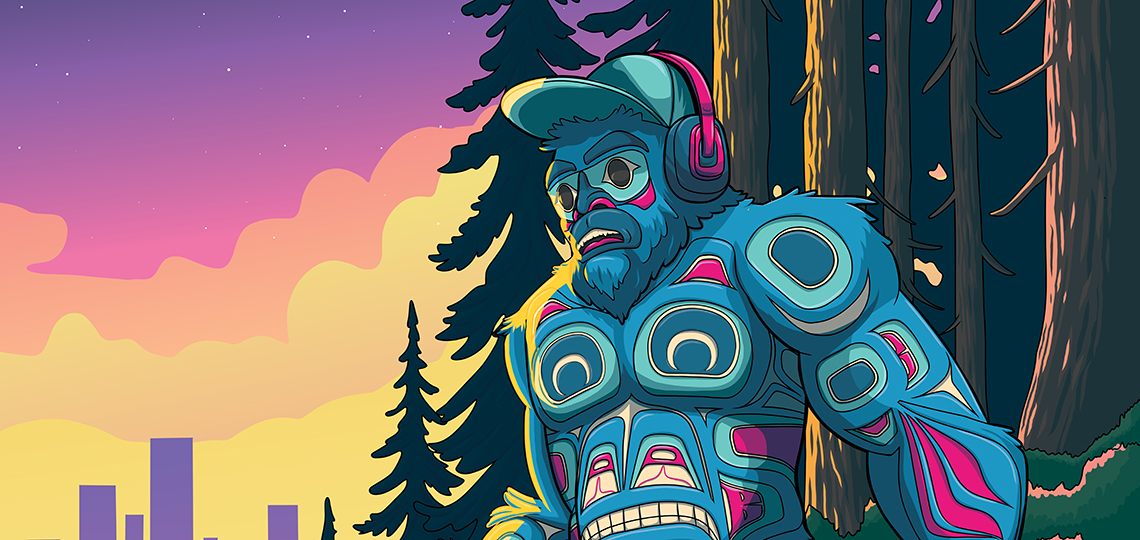
Urban Spirit: The Sasquatch Between Two Worlds
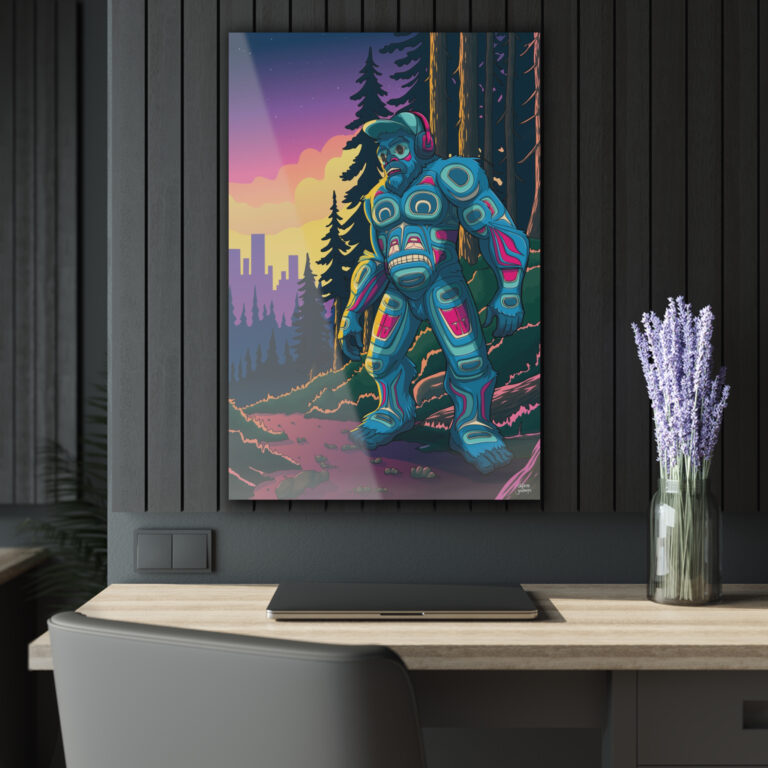
This piece was selected as part of the Juried Art Show for the “In the Spirit” Exhibit at the Washington Historical Museum, in Tacoma summer of 2025. There is a Limited Edition release of the print available at my in person events. T-shirts are available in the online store.
Make sure to check out the press release about this Native Art over at Weekly Volcano of Tacoma
Why a Sasquatch?
It’s a feeling I think a lot of us know: the push and pull between two different worlds. For me, that feeling has become a central part of my life and, now, my art.
The spark for my new piece, “Urban Spirit,” ignited on the road. I found myself frequently traveling from my rural home, surrounded by the forests of the Olympic Peninsula, into the heart of Seattle to teach my Formline design classes. On those drives, I’d watch the concrete and steel give way to cedar and fir, and the hum of the city would slowly be replaced by the quiet of the woods. I’d swap my urban streetwear for something more comfortable. It was a physical and mental transition between two realities. It dawned on me that I wasn’t alone in this experience; many of my students were making a similar journey, traveling into the city to connect with this ancient art form.
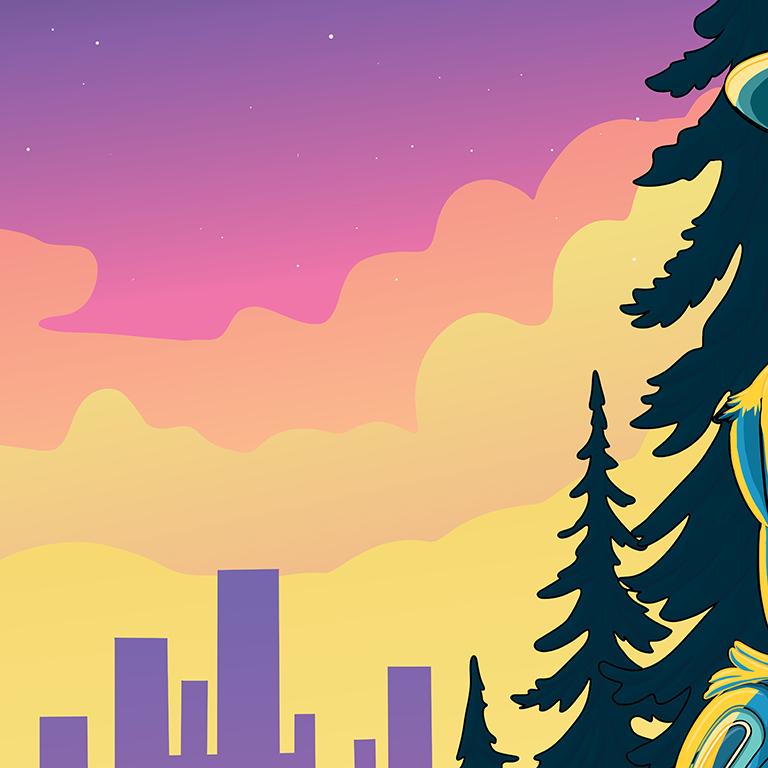
Closeup of the sunrise over the city, stars just barely visible
That moment of reflection, of feeling caught between two worlds, is what I wanted to capture.
The Heart of the Story: A Modern-Day Shape-Shifter
To tell this story, I knew the central figure had to be Sasquatch. The choice was partly strategic; I knew this piece was for a juried show at the Washington State Historical Museum, and in Washington, Bigfoot is an icon. But more importantly, he was the perfect spiritual and psychological fit for the story.
I’ve always imagined these beings as liminal, living in a dimension that runs parallel to our own, able to pop in and out of our senses. You might hear them, see them, or smell them, but they exist just at the edge of our reality. This resonates deeply with me in how we navigate modern life. We all have to wear different hats, popping into different scenarios where we play a role temporarily before popping back out. With the pressures of modern society and social media, you’re expected to fulfill a whole bunch of different roles. It’s not like the old days where you might be known simply as a “master carver.”
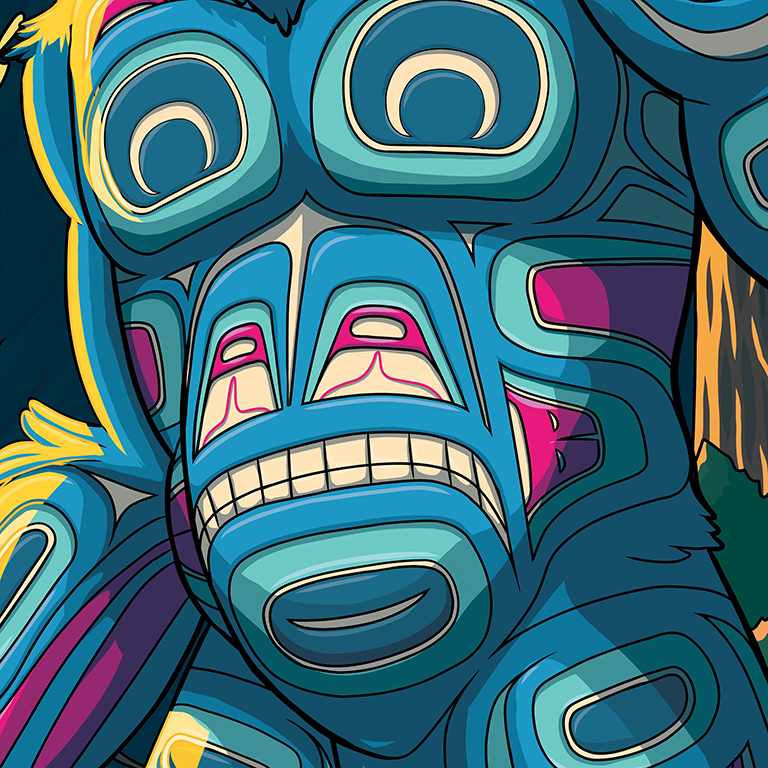
Closeup of the ape in the stomach
Sasquatch, as this liminal being, embodies that feeling of navigating between different worlds. While our Tlingit stories have true shape-shifters, I wanted this piece to connect more with pop culture and the shared experience of modern people—not just Native people—finding themselves having to shape-shift a bit throughout their lives and figuring out where they find peace.
The Process: From a Bigfoot Sketch to a Story
This piece started, as most of them do, with a very loose sketch of the character himself on my iPad. I focus on the pose and the feeling first; I didn’t even know what the background would be until the character was fully created. Once I have that initial creative spark down, the technical process begins. I add a vectorization layer, painting with vector lines to get those really sharp, crisp edges that are a hallmark of my style. This allows the artwork to be blown up to a huge size without losing any fidelity.
Only after all the linework is done do I begin to play with color. When the color scheme is set, I export it to my desktop and bring it into Adobe Illustrator. This is where I have more control to add the subtle gradient fills and prepare the final file for print, converting it to the CMYK color space to ensure the colors stay as vibrant on paper as they were on my screen.
Evolving the Form: Knowing the Rules to Break Them
Part of my work as an artist is to test new ideas and sometimes break conventions, and this piece was a great opportunity for that. I imagined the Bigfoot as if he’s been carved, with the Formline incised directly into his body.
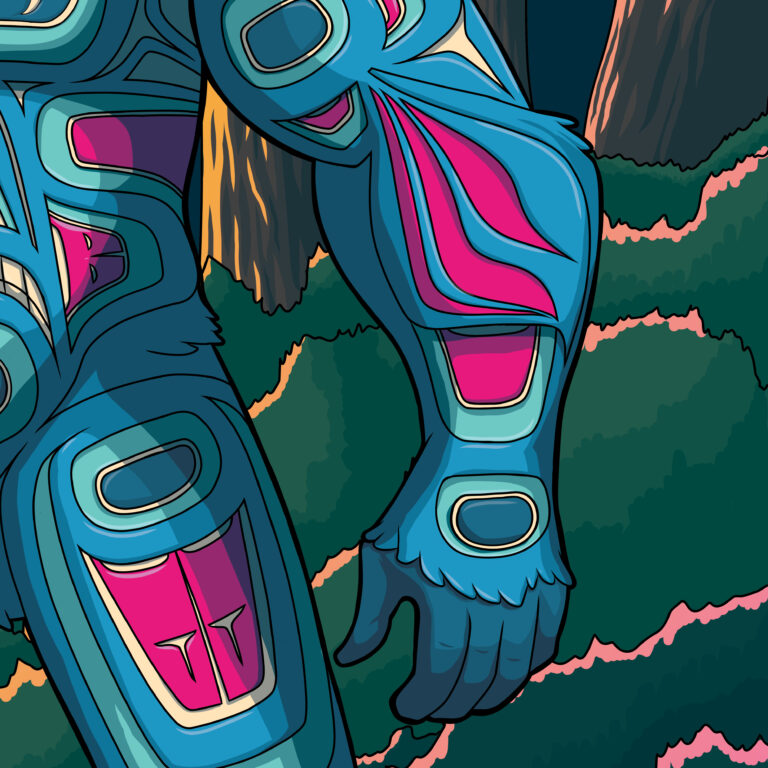
Closeup of the s-forms in the forearm
I experimented in a few places:
-
The Forearms: I used S-forms—which typically represent the voids between ribs—to suggest the fibrous strength of muscle. We think of Sasquatch as a powerful being, and I wanted to visually represent that raw strength.
-
The Shins: I used butting U-forms with a trigon relief. This isn’t a typical combination, but it worked perfectly to create the unique shape and musculature of the Sasquatch’s shins.
-
The Body: I placed a face in the chest and stomach area, which is a classic Formline technique. But I gave it a more gorilla-like shape, playing with the idea that some people think of Sasquatch as a kind of primate or unknown hominid.
-
The Details: I also added fur all over the body, which is definitely not a traditional part of Formline, to give it that organic, creature-like feel. These are the small evolutions that I hope keep the art form alive and moving forward. As I grow, my vocabulary of the form expands, allowing me to be more intentional with my choices.
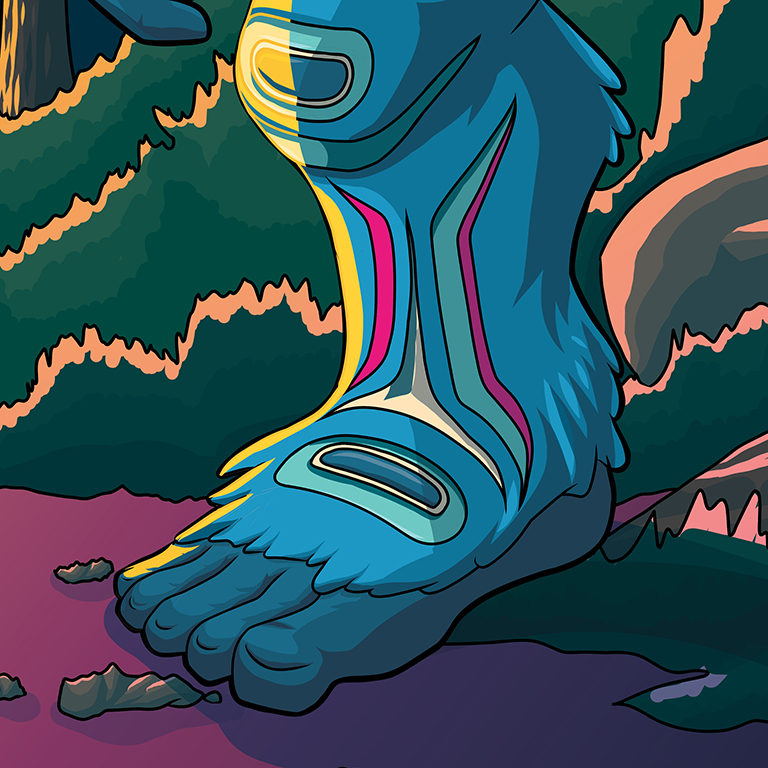
Closeup of the u-forms in the shins
A Universal Journey
In the final piece, you see Sasquatch on a hill at sunrise, overlooking a city he’s just left behind. He still carries the icons of urban life—the headphones, the flat-bill cap. He is looking back, filled with a sense of longing for one world while being firmly planted in another. This painting is a reflection of that universal search for peace and belonging in our complex, modern world. It’s about honoring the lessons from every place we’ve been, while embracing the quiet strength of the place we call home.
Gunalchéesh (Thank you) for reading.
The Limited Edition prints of “Urban Spirit” will be debuting at the ‘In The Spirit’ Arts Market & Exhibition at the Tacoma Art Museum, where it was honored to be selected as the signature piece for the festival. I hope to see you there.
